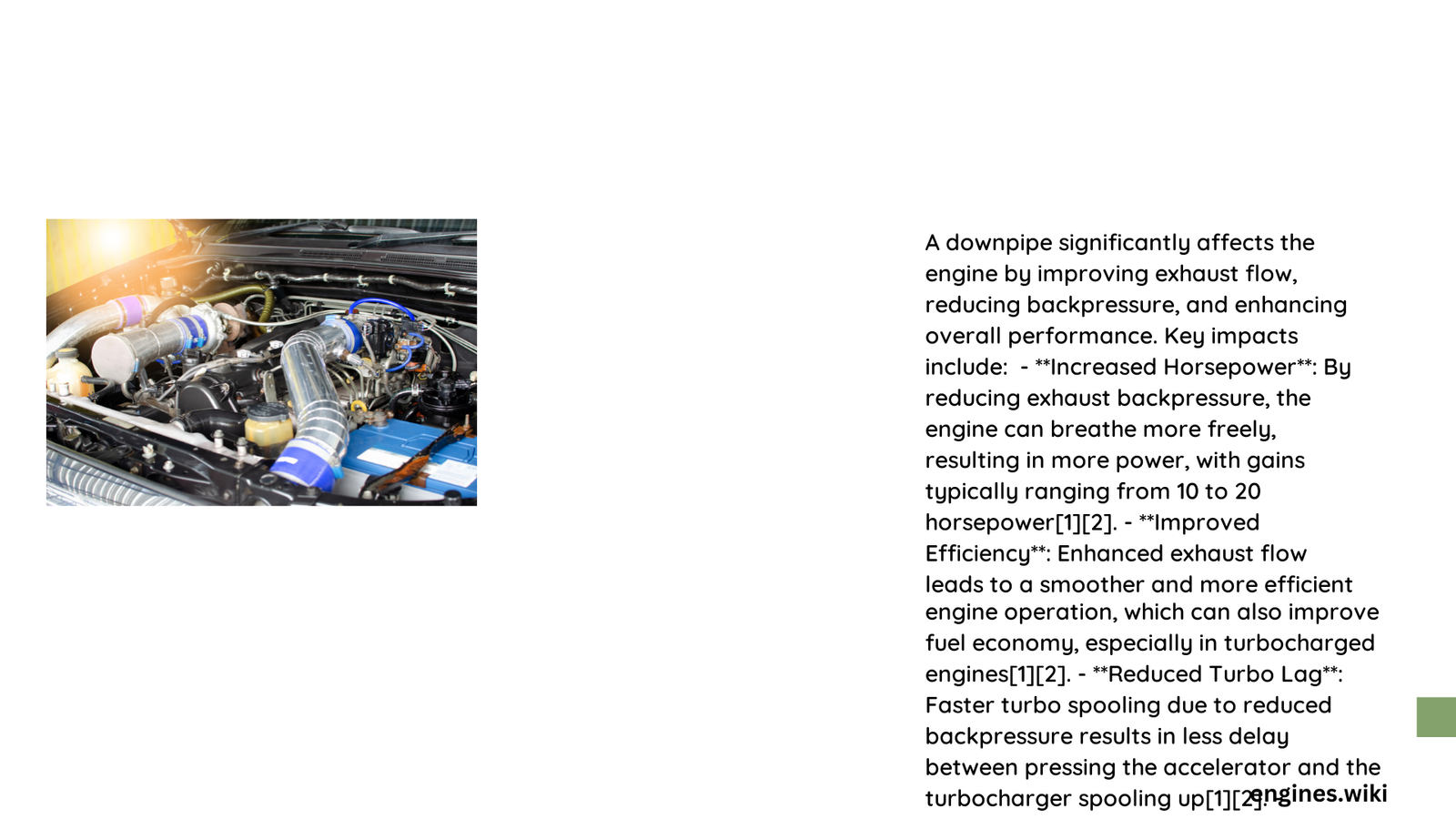A downpipe significantly influences engine performance by reducing exhaust backpressure, enhancing turbocharger efficiency, and potentially increasing horsepower and torque. Vehicle enthusiasts can expect substantial improvements in engine breathing, responsiveness, and overall power output through strategic downpipe modifications, making it a critical component in performance tuning.
What Happens When You Install a Downpipe?
When considering whether a downpipe affects the engine, the answer is a resounding yes. Downpipes play a crucial role in transforming engine performance through several key mechanisms:
How Does Exhaust Flow Impact Engine Efficiency?
A downpipe directly influences engine efficiency by:
- Reducing Backpressure
- Decreases resistance in exhaust system
- Allows faster exhaust gas evacuation
-
Improves overall engine breathing
-
Enhancing Turbocharger Performance
- Accelerates turbo spool time
- Reduces turbo lag
- Increases throttle responsiveness
What Performance Gains Can You Expect?
Performance gains vary depending on vehicle specifications:
| Vehicle Type | Horsepower Gain | Torque Increase |
|---|---|---|
| Turbocharged Compact | 10-15 HP | 20-25 lb-ft |
| Performance Sedan | 15-25 HP | 25-35 lb-ft |
| High-Performance Sports Car | 20-30 HP | 35-45 lb-ft |
Why Material and Design Matter?
Downpipe construction significantly impacts performance:
- Material Considerations
- Stainless steel provides superior heat resistance
- Mandrel-bent designs minimize flow restrictions
-
Larger diameter (2.5″ – 3.5″) improves exhaust dynamics
-
Catalytic Converter Options
- High-flow catalytic converters maintain emissions compliance
- Reduce weight and improve exhaust scavenging
- Enable more aggressive tuning potential
What Technical Modifications Are Required?
Successful downpipe integration requires:
- Professional ECU tuning
- Precise air-fuel ratio adjustments
- Boost pressure recalibration
- Potential emissions system modifications
Are There Potential Risks?
While downpipes offer substantial benefits, consider:
- Potential warranty voiding
- Check engine light complications
- Need for professional installation
- Compliance with local emissions regulations
How to Choose the Right Downpipe?
Selection criteria include:
- Vehicle-specific compatibility
- Performance goals
- Budget constraints
- Local legal restrictions
- Intended driving conditions
Conclusion

Downpipes fundamentally transform engine performance by optimizing exhaust flow, reducing system restrictions, and enabling more efficient turbocharger operation. Proper selection, professional installation, and comprehensive tuning are key to maximizing potential gains.
Expert Recommendations
- Consult professional automotive performance specialists
- Invest in high-quality, vehicle-specific downpipe designs
- Prioritize comprehensive tuning alongside hardware upgrades
- Consider long-term performance and reliability
